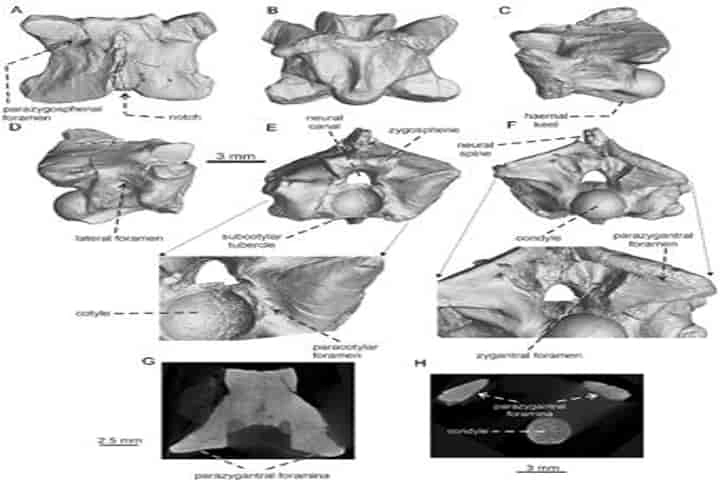

Indian scientists have discovered an almost 35 million years old rare fossil of the gigantic Madtsoiidae snake from Ladakh Himalaya for the first time (Pic. Courtesy PIB)
<p>
Indian scientists have discovered an almost 35 million years old rare fossil of the gigantic Madtsoiidae snake from Ladakh Himalaya for the first time, according to a statement issued by the Ministry of Science and Technology today.</p>
<p>
The fossil of a Madtsoiidae snake spotted in the molasse deposits of Ladakh Himalaya indicates their prevalence in the subcontinent for a much longer time than previously thought, the official statement said.</p>
<p>
The discovery shows that global climatic shifts and the prominent biotic reorganization across the Eocene-Oligocene boundary (which correlates to the European Grande Coupure), did not cause the extinction of this important group of snakes in India.</p>
<p>
Madtsoiidae is an extinct group of medium-sized to gigantic snakes which first appeared during the late Cretaceous period&nbsp; and were mostly distributed in the Gondwanan landmasses. From the fossil record, the whole group disappeared in the mid-Paleogene period across most Gondwanan continents except for Australia where it survived with its last known taxon Wonambi till late Pleistocene.</p>
<p>
The occurrence of Madtsoiidae from the Oligocene of Ladakh indicates their continuity at least to the end of the Paleogene (geologic period and system that spans 43 million years from the end of the Cretaceous Period 66 million years ago). The research published in Journal of Vertebrate Paleontology shows that the members of this group were successful in this subcontinent for much longer time than previously thought.</p>
<p>
The scientists who have made the discovery include Dr. Ningthoujam Premjit Singh, Dr. Ramesh Kumar Sehgal, and Mr. Abhishek Pratap Singh from Wadia Institute of Himalayan Geology, Dehradun, in association with Dr. Rajeev Patnaik and Mr. Wasim Abass Wazir from Panjab University Chandigarh; Dr. Navin Kumar and Mr. Piyush Uniyal from Indian Institute of Technology Ropar, and Dr. Andrej &#268;er&#328;ansk&yacute; of Comenius University Slovakia.</p>
<p>
The newly described specimen is housed in the repository of Wadia Institute, an autonomous institute of Department of Science and Technology.</p>
Prime Minister Narendra Modi had a "fruitful conversation" with Finnish President Alexander Stubb on Wednesday…
US Vice President JD Vance is scheduled to visit India next week. He will meet…
In a first, Indian Railways has installed an ATM on a trial basis -- on…
Commerce Minister Piyush Goyal met a delegation from Elon Musk-owned satellite internet services company Starlink.…
The United States has enacted restrictions on the export of Nvidia's H20 chips to China,…
BusinessWire India QpiAI, a leader in quantum computing and generative AI, announced its First Quantum…